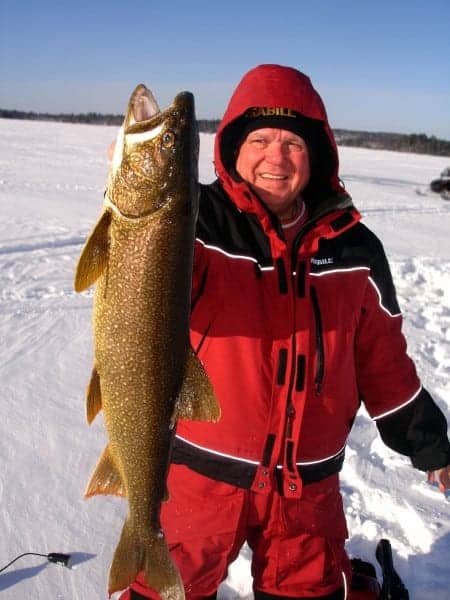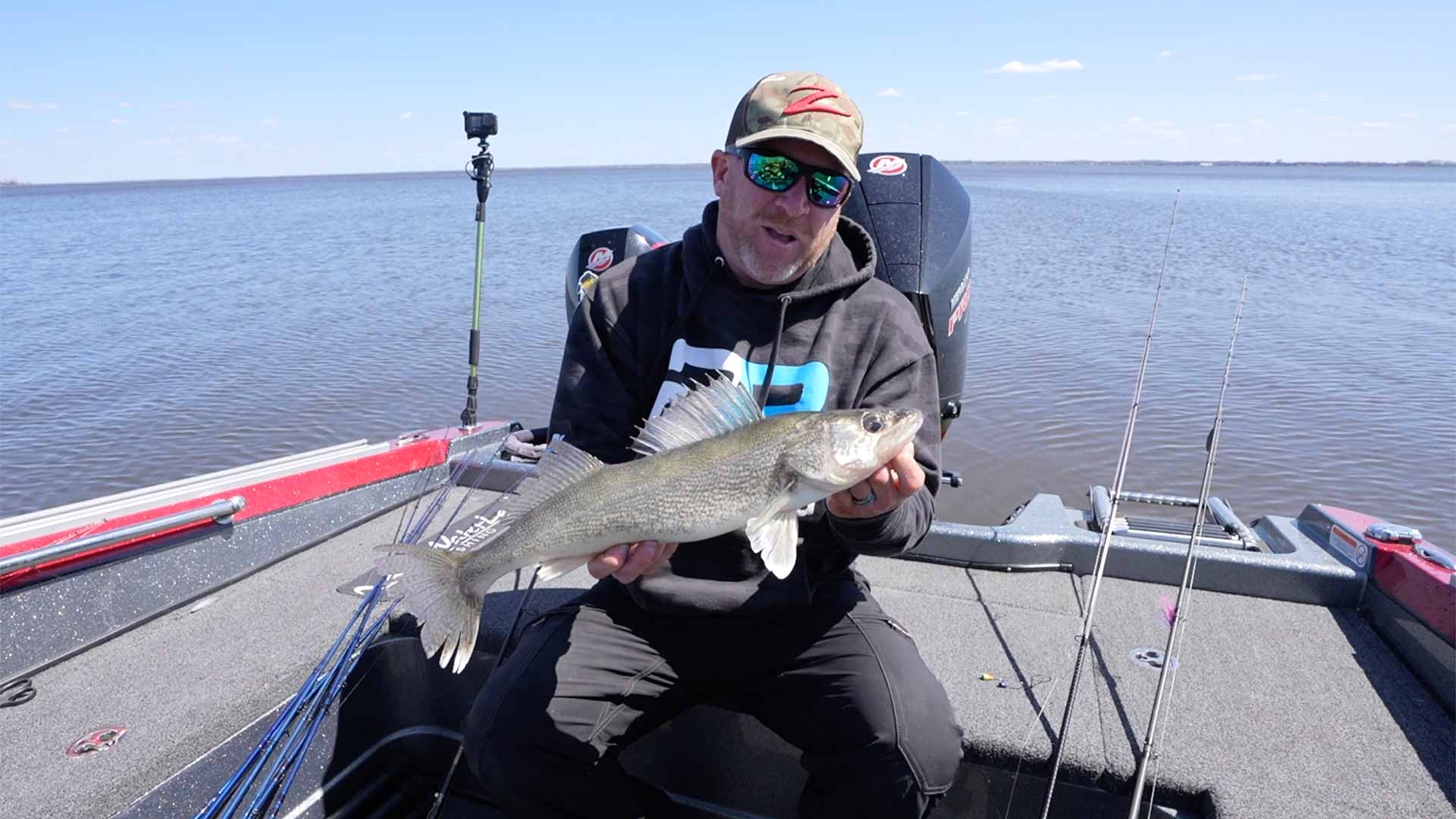A New Year’s tradition was postponed this year when the January 1 reopening of the lake trout season in northwest Ontario came and went with little to no safe ice for foot traffic, much less snowmobile access to remote lakes. Many anglers who annually look forward to spending New Years Day on the ice were forced to find other activities to help ring in the new year.
Until now! The recent subzero snap holding sway throughout the region has locked in even large lakes and thickened the ice surface sufficiently to permit safe access to lakers. Early reports indicate that lake trout fishing is excellent. Which is good news for trout enthusiasts, because first-ice fishing for lake trout is often frantic, exciting and loads of fun. Even if it’s a bit late getting started this year.
The basic pattern is to fish deep holes of 70 to 100 feet or more where lake trout congregate at first ice. Look for sheer bluffs that indicate deep water nearby. If available, check a hydrographic lake map or onscreen chart for the presence of points or humps intersecting these deep hideouts, providing places for lake trout and baitfish to cluster, and for you to begin fishing.
Lakers are usually aggressive, and respond to a wide variety of lures. Heavy 1- to 2-ounce white jigs tipped with plastic action tails are standbys. So are similar-weight silver jigging spoons. Add to the mix sinking rattlebaits for enhanced vibration, flash and attraction.
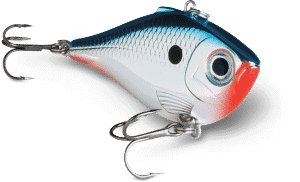
On a subtler note, try ½- to 1-ounce airplane jigs with a much slower, circling descent beneath the hole. A size 9 Jigging Rapala features a similar circling action when jigged, while dropping quickly to the lakers’ level.
In recent years, a lot more folks are jigging 1/2- to 1-ounce jigheads tipped with white or silvery 4- to 6-inch soft plastic minnow imitations.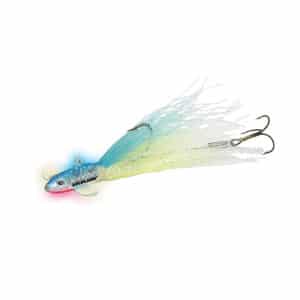
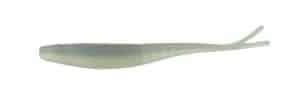
They can be jigged subtly or aggressively, depending upon what the trout prefer. The best ones feature forked tails that barely wiggle at rest when suspended beneath the hole.
The thing with lake trout is, they can literally be at any depth, from on the bottom to right beneath the ice. Therefore, you need to watch for the presence of fish on your electronics to see where they are, and how they react to your lures. It is not unusual for them to follow lures from deep water right on up to the hole when you retrieve your bait upward, surprising you by striking right beneath the hole.
A good rule of thumb is to drop your lure to bottom, jig it up and down a few times, pause, re-jig again, and then reel the bait up 10 feet and repeat. Then another 10 feet, and so on, until your lure is right under the ice. Then drop it back down again, or proceed to another nearby hole to repeat the process.
Due to the extreme depth being fished, many anglers opt to fish out in the open, away from a portable fish house, while using a long rod anywhere from 4 to 7 feet in length. While it’s a tad bit unusual to stand that far away from a hole when jigging, the added advantage is a large, overhead sweeping hookset to tighten your line when a fish strikes the bait. If you’re using monofilament, you have to remove a lot of stretch from the line when fishing that deep.
Spinning or casting gear? Your choice. Most fishermen use spinning gear rigged with perhaps 14- to 20-pound test mono to handle big fish potentially pushing 20 pounds. You may prefer lighter line, especially if the fish don’t run as big in the lake where you’re fishing. Or, switch to skinnier superline, which works well in deep water as long as you don’t have a freezing problem up top, fishing out in the open, on subzero days.
Admittedly, that can be challenging when the air temperature is -30 F. Balmy temps of 10 to 15 degrees above zero are perhaps more appealing to the first-timer. Hardcore veterans, however, tend to scoff at the cold, dress accordingly, and move frequently to stay warm and locate new groups of active biters.
